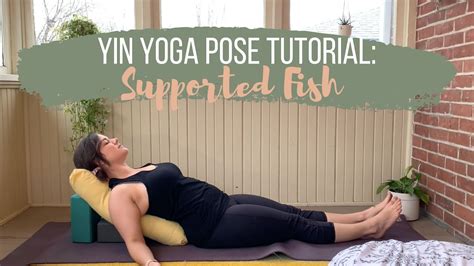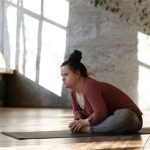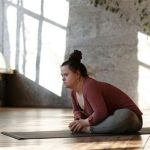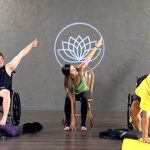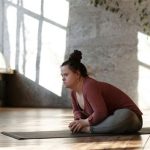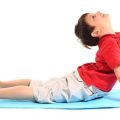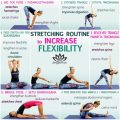Yoga for Disabilities: Practical Modifications for Inclusive Practice
Yoga is widely recognized for its physical, mental, and emotional benefits. However, for individuals with disabilities, traditional yoga practices may pose barriers. This article explores specific modifications that make yoga accessible and beneficial for people with a range of disabilities. By examining the key concepts, historical context, current state of inclusive yoga, practical modifications, case studies, and more, we aim to provide a comprehensive guide to fostering a more inclusive yoga environment.
Introduction
Yoga has long been promoted as a holistic practice that enhances physical health, mental clarity, and emotional well-being. However, its traditional forms often assume a level of mobility, flexibility, and physical endurance that can exclude individuals with disabilities. As the understanding of disabilities and accessibility evolves, yoga instructors and practitioners are now focusing on adapting poses, sequences, and environments to ensure that people of all abilities can experience the benefits of yoga. In this article, we dive into the modifications that work for individuals with various disabilities, backed by evidence, expert insights, and real-world examples.
Key Concepts
- Inclusive Yoga: Yoga practices that are accessible to people with varying abilities by incorporating modifications that suit their needs.
- Adaptive Yoga: A specialized form of yoga where the practice is tailored to meet the needs of individuals with physical or mental limitations.
- Chair Yoga: A style of yoga practiced while sitting or using a chair for support, particularly useful for individuals with mobility challenges.
- Trauma-Informed Yoga: Yoga that is designed with an understanding of trauma’s impact on the body and mind, making it safer for individuals with psychological or emotional disabilities.
- Restorative Yoga: A gentle form of yoga that focuses on relaxation and recovery, which can be beneficial for individuals with chronic pain or limited mobility.
Historical Context
The relationship between yoga and disabilities has evolved significantly over time. Historically, traditional yoga as practiced in India was seen as a spiritual and physical discipline primarily accessible to able-bodied individuals. As yoga became globalized and adopted by Western cultures in the 20th century, it began to be adapted for different bodies and abilities. The 1990s marked the beginning of more organized efforts to adapt yoga for people with disabilities, with the rise of Adaptive Yoga and organizations like the Accessible Yoga Movement. Today, there are countless resources and classes designed to meet the needs of people who may have otherwise been excluded from traditional yoga practices.
Current State Analysis
Yoga for individuals with disabilities has gained increasing attention in recent years, with more studios offering adaptive classes and specialized training for instructors. Despite these advances, many people with disabilities still encounter barriers to practicing yoga. These obstacles include physical inaccessibility of yoga studios, lack of awareness about disabilities among instructors, and a shortage of resources for adaptive yoga practices.
Moreover, the diversity of disabilities means that there is no one-size-fits-all approach to yoga modifications. The current state of adaptive yoga requires instructors to have a deep understanding of different disabilities and a flexible approach to teaching. Although online platforms and virtual classes have expanded accessibility, more needs to be done to integrate inclusive practices into mainstream yoga culture.
Practical Applications: Modifications That Work
For yoga to be inclusive, modifications must be available to suit various needs. Below are several practical adaptations for different types of disabilities:
| Disability | Common Challenges | Effective Modifications |
|---|---|---|
| Mobility Impairments | Difficulty standing or balancing | Chair yoga, use of props (blocks, straps), seated or supine positions |
| Spinal Cord Injuries | Lack of sensation or control in lower body | Focus on upper body strength, support with props, modified breathing techniques |
| Chronic Pain | Pain during movement | Restorative yoga, slow and mindful transitions, using bolsters for support |
| Visual Impairments | Difficulty following visual cues | Detailed verbal instructions, physical touch (with permission), use of props |
| Hearing Impairments | Difficulty following auditory cues | Demonstrations, visual cues, pre-class explanations of sequences |
| Cognitive Disabilities | Difficulty understanding instructions | Simplified language, step-by-step guidance, repetition of sequences |
| Emotional Trauma | Triggering of trauma responses | Trauma-informed yoga, emphasis on personal agency, avoiding triggering language |
| Amputations | Loss of limb or limbs | Use of prosthetics if available, focus on balance and strength, seated or lying down poses |
| Autism Spectrum Disorders | Sensory sensitivities, difficulty focusing | Shorter sessions, predictable sequences, avoiding sensory overload (e.g., dimming lights) |
| Parkinson’s Disease | Tremors, instability | Chair yoga, slow movements, balancing poses with props for support |
Case Studies
Case Study 1: Chair Yoga for Seniors with Limited Mobility
An adaptive yoga class was introduced in a senior community where many participants faced mobility issues due to aging, arthritis, or previous injuries. Using chairs for support, participants were able to perform seated versions of common yoga poses like cat-cow, seated twists, and forward folds. The results showed improved flexibility, mental clarity, and decreased stress levels among participants.
Case Study 2: Trauma-Informed Yoga for Veterans with PTSD
A group of veterans with post-traumatic stress disorder (PTSD) engaged in a trauma-informed yoga program that focused on breath control, gentle movement, and mindfulness. This form of yoga avoided triggers like rapid movements and focused on creating a safe environment for veterans. Many reported an increase in emotional resilience and better coping mechanisms after just six weeks of practice.
Stakeholder Analysis
In inclusive yoga, multiple stakeholders play key roles:
- Yoga Instructors: Must be educated in disability awareness and adaptive techniques.
- Yoga Studios: Need to provide physically accessible spaces and supportive resources (e.g., props, trauma-informed spaces).
- Healthcare Providers: Can recommend yoga as a complementary therapy for individuals with disabilities, working with instructors to ensure safety.
- Participants: People with disabilities benefit not only physically but also through community engagement and mental health improvements.
- Nonprofits and Advocacy Groups: Work to spread awareness of inclusive yoga and train instructors in accessibility techniques.
Implementation Guidelines
To successfully implement inclusive yoga, consider the following guidelines:
- Educate Instructors: Offer specialized training on adaptive techniques, trauma-informed practices, and disability awareness.
- Create Accessible Spaces: Ensure yoga studios are wheelchair accessible and have necessary props (e.g., chairs, blocks, straps).
- Engage in Collaborative Planning: Collaborate with healthcare providers and participants to tailor yoga classes to individual needs.
- Offer Online Classes: Online platforms can make yoga more accessible to those unable to physically attend a studio.
- Encourage Self-Pacing: Promote a practice that allows individuals to progress at their own pace, with modifications available for every pose.
Ethical Considerations
When offering yoga to people with disabilities, ethical considerations are paramount. Instructors must respect participants’ limitations and ensure that modifications do not compromise the safety or dignity of the individual. Consent is critical, particularly when physical adjustments are made during practice. Furthermore, yoga teachers should avoid making assumptions about participants’ abilities and be open to feedback on how to improve accessibility.
Limitations and Future Research
While adaptive yoga has made significant strides, limitations remain in the accessibility and customization of practices for different types of disabilities. Many yoga instructors still lack adequate training on disability awareness, and resources for inclusive yoga are unevenly
